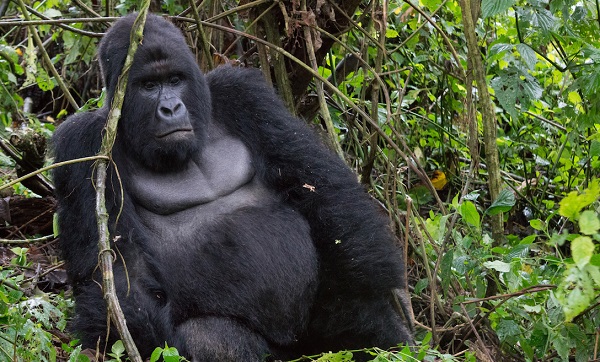
Geneva, Switzerland | AFP | The fin whale and mountain gorilla populations grew significantly due to efforts by conservationists to halt their descent towards extinction, the International Union for Conservation of Nature (IUCN) said Wednesday.
In an update of its “Red List” of threatened species, the IUCN said that a broad whaling ban had allowed the fin whale’s global population to roughly double since the 1970s to around 100,000 mature individuals, pushing it off the “endangered” list to the “vulnerable” category.
International bans on commercial whaling have been in place since 1976 in the North Pacific and in the southern hemisphere. There have been significant reductions in catches in the North Atlantic since 1990.
Another whale species that had been overexploited for its blubber, oil and meat — the western gray whale — has also benefited and moved from the “critically endangered” to the “endangered” category.
“It is a relief to finally see their populations on the rise,” Randall Reeves, head of IUCN’s cetacean specialist group, said in the statement.
The mountain gorilla meanwhile has been moved from the “critically endangered” category to “endangered” thanks to collaborative conservation efforts across several countries, including anti-poaching patrols, IUCN said.
– Growing population –
In the last Red List assessment of the mountain gorilla in 2008, its population was estimated at around 680 individuals.
Ten years later, its population is estimated to have grown to over 1,000 individuals — the highest figure ever recorded for the subspecies of the Eastern Gorilla, IUCN said.
The mountain gorilla’s habitat is restricted to protected areas covering nearly 800 square kilometres in two locations — the Virunga Massif and Bwindi-Sarambwe — which stretch across the Democratic Republic of Congo, Rwanda and Uganda.
It still faces significant threats, including poaching, recurring civil unrest and diseases.
“Today’s update to the IUCN Red List illustrates the power of conservation action,” Inger Andersen, IUCN Director General, said in a statement.
“These conservation successes are proof that the ambitious, collaborative efforts of governments, business and civil society could turn back the tide of species loss,” she said.
The updated Red List is meanwhile far from a rosy read.
The list now includes 96,951 species of animals and plants, of which 26,840 are threatened with extinction, IUCN said.
It said overfishing is causing declines in fish species in parts of the developing world, with 13 percent of the world’s grouper species and nine percent of Lake Malawi fish now facing the threat of extinction.
NEWS: Conservation action and cooperation between countries succeeding as two whale species and Mountain Gorilla edge away from extinction – @IUCNRedList update https://t.co/cBYusyBoDQ #COP14 @UNBiodiversity pic.twitter.com/tS6ykWEELp
— IUCN (@IUCN) November 14, 2018
 The Independent Uganda: You get the Truth we Pay the Price
The Independent Uganda: You get the Truth we Pay the Price



